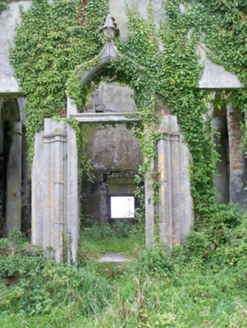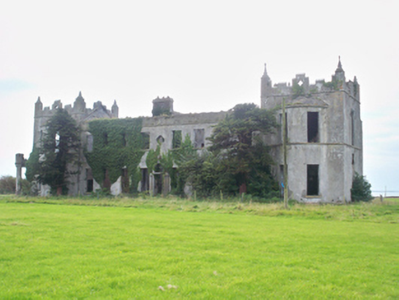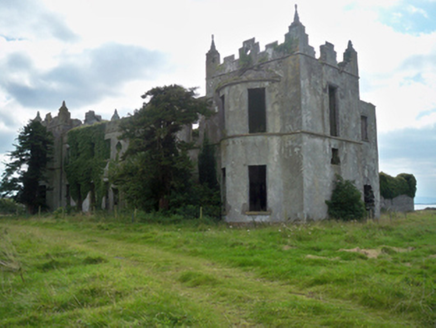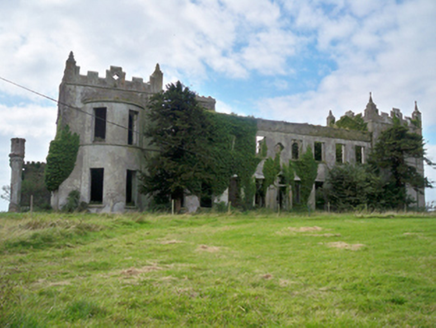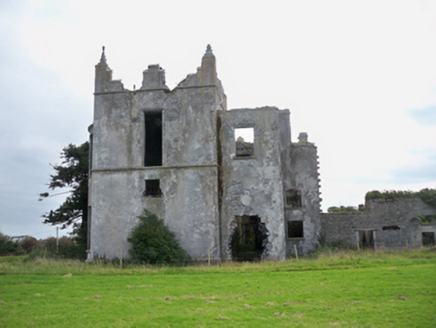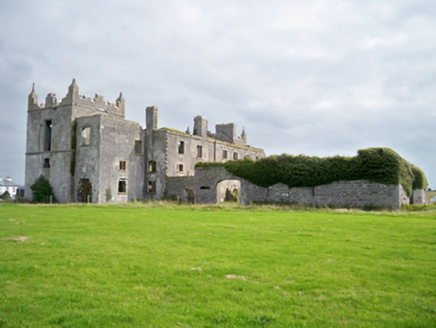Survey Data
Reg No
30409429
Rating
Regional
Categories of Special Interest
Archaeological, Architectural, Artistic, Historical
Original Use
Country house
Date
1760 - 1800
Coordinates
134839, 221163
Date Recorded
18/09/2009
Date Updated
--/--/--
Description
Roofless remains of detached two-storey over basement double-pile country house, built c.1780, renovated c.1820, now roofless. Comprising central block having nine bays to front and six bays to rear, having two-bay two-storey towers of c.1820 terminating each end, projecting slightly to front of front pile and having two-bay two-storey bows to front elevations. Further single-bay three-storey block to north-east re-entrant corner. Towers have crenellated parapets with quatrefoils to centre, and decorative carved stone pinnacles to corners. Rendered chimneystacks. Rendered rubble limestone walls with limestone render string course to eaves and moulded render eaves and sill courses to towers. Square-headed chamfered window openings with stone sills. Label-mouldings to windows of four westmost bays of rear elevation, and moulded quatrefoil opening above front entrance. No frames survive. Upper windows to north elevation have moulded heads and upper jambs of medieval limestone work, that to tower having decorative vegetal detailing. Pointed arch door opening with carved limestone doorcase and flaning clustered columns, with ogee detail above having decorative pinnacle, and with moulded lintel to doorway proper. Remains of courtyard to rear, with pseudo-three-centred arched carriage opening with cut-stone voussoirs to north wall. Set outside Oranmore village on a peninsula jutting into Galway Bay.
Appraisal
Built in the late eighteenth century on the site of an earlier castle owned by the Blakes, Ardfry House has been much altered and added to during its life. The first documented restoration was completed in 1826 when some features were added in the then fashionable Gothic Revival style, including pinnacles, crenellations and the quatrefoil window above the entrance door. The house was residence to Lord Wallscourt, about whom it is said that liked to roam naked and was made to wear a cowbell by his wife to warn the maids of his approach. The house received another brief facelift during the early 1970s when it was re-roofed and refenestrated for use in the Paul Newman film, 'The Mackintosh Man'. Now ruinous, it nonetheless creates an interesting eyecatcher in the landscape.
